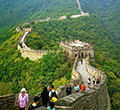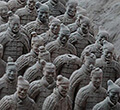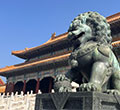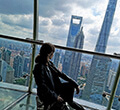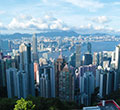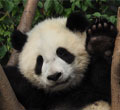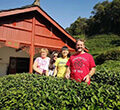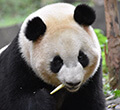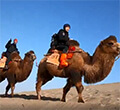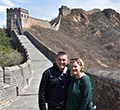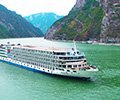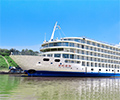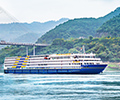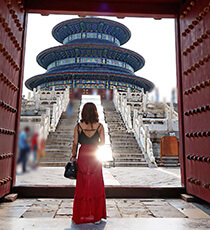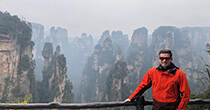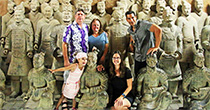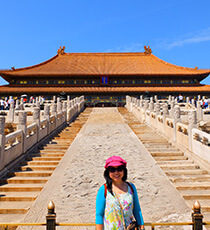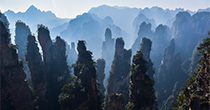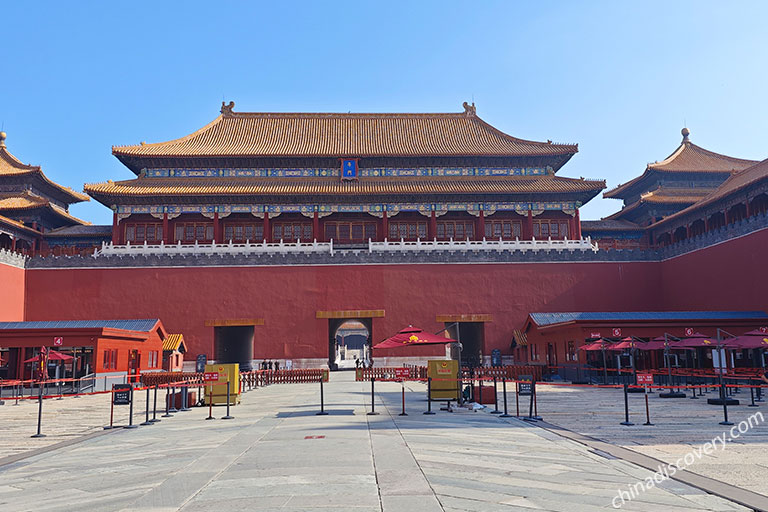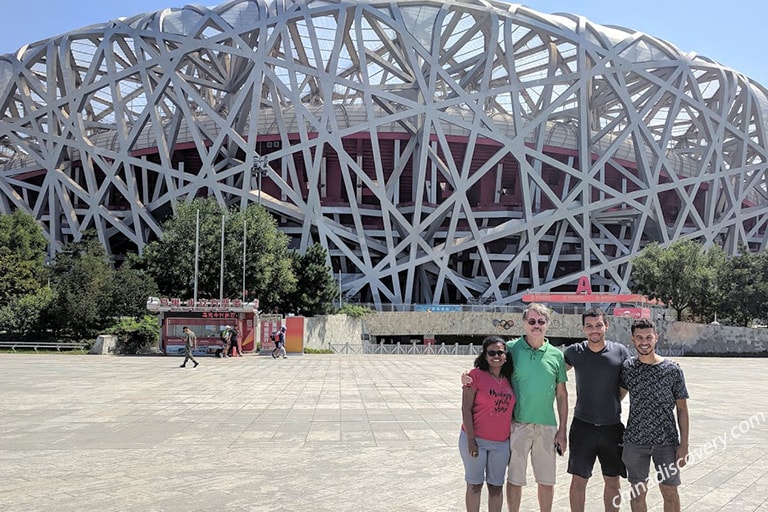Your tour - at a glance
Day 1~3 Arrival & Beijing Tour
Two full days and a half day sightseeing covering the grand Tiananmen Square, historical Forbidden City, spectacular Temple of Heaven, man-made wonder Great Wall of China, royal park Summer Palace, traditional Hutong, etc.
Day 4~8 Shanxi Province Tour
Start to travel from Datong to visit Yungang Grottoes and Hanging Temple, and move to Wutaishan to visit Mount Wutai, lastly transfer to Pingyao to explore Pingyao Ancient City and Wang's Family Compound, etc. Finish your tour in Pingyao.
Full Itinerary Day by Day
Day 1 Beijing Arrival
Welcome to Beijing, the capital of China, rich in history and culture.
Your lifetime China tour begins with welcome from your local guide at the Beijing airport or railway station. Then be escorted to your hotel in a private vehicle. The rest of today is yours to acclimatize or explore the vast metropolis on your own.
Day 2 Beijing (B, L)
After breakfast, you will start a journey through Beijing's storied past with a brief visit to Tiananmen Square, the world's largest public plaza. This iconic site is where Chairman Mao proclaimed the founding of the People's Republic of China from the imposing Tiananmen Gate.
Step through Tiananmen Gate and into the heart of imperial China - Forbidden City (Palace Museum). This vast palace complex of nearly 10,000 rooms, once home to 24 emperors from the Ming and Qing dynasties, stands as a marvel of architectural brilliance and historical grandeur. Admire the intricate details, from the dazzling yellow-glazed tile roofs to the refined white marble bases. As you explore the myriad rooms and courtyards, envision the lives of emperors, empresses, and their courtiers.
After leaving the Forbidden City, take a short walk to Jingshan Park, where you can ascend to its summit for a panoramic view. From here, marvel at the sweeping vistas of the Forbidden City to the south and the serene landscapes of Beihai Park, Shichahai Lake, and the iconic Drum Tower to the north. For unforgettable photos, make your way to one of the palace's corner towers, a favorite spot among photography enthusiasts.
After lunch, you will go to hop on a rickshaw to experience the Beijing Hutongs - narrow alleys lined with historic quadrangle dwellings. This journey will immerse you in the traditional Beijing lifestyle, where you can explore charming antique shops, boutique stores, and witness the city's historical evolution. You'll also visit a local family's home in the Hutongs, offering a glimpse into everyday life.
Optional Hutong Experience: If time permits, you may join a class on Traditional Chinese Paper Cutting in the Hutong area. Learn to create beautiful designs and motifs with the guidance of a skilled teacher.
Optional Night Activities:
1) Watch a wonderful acrobatic performance at the Chaoyang Theater;
2) Or enjoy the classic Chinese art performance of Beijing Opera at Liyuan Theater.
-
 Our customer visited Tiananmen Square in Summer
Our customer visited Tiananmen Square in Summer
-
 Wumen Gate of Forbidden City
Wumen Gate of Forbidden City
-
 Carsha's group from USA experience Hutong Richshaw in Beijing in September 2019
Carsha's group from USA experience Hutong Richshaw in Beijing in September 2019
Day 3 Beijing (B, L)
After breakfast, visit Temple of Heaven, a historic site once used by emperors for sacrificial ceremonies. As you explore this grand complex of buildings and gardens, you’ll discover the rituals and beliefs of the Ming and Qing emperors, who sought divine blessings for good harvests through intricate ceremonies. Beyond its historical importance, you'll observe vibrant local life, with residents practicing Tai Chi, dancing, and engaging in various exercises among the lush pine woods.
After the Temple of Heaven visit, you'll be driven approximately 70 km (about 1.5 hours) to the iconic Mutianyu Great Wall, a less-crowded but beautiful section of this World Wonder. Begin your adventure by ascending the wall via an enclosed cable car, reaching No. 14 Watchtower, your starting point for an incredible experience. Hike westward along the wall, passing through towering watchtowers and capturing breathtaking views. The trail is moderate, suitable for most fitness levels, including families with children. For the more adventurous, challenge yourself by climbing the Great Man Slope to No. 20 Watchtower, the highest point, offering an even more spectacular vista. After exploring the wonderful sightseeing, hike back to No. 14 Watchtower and descend by the enclosed cable car.
Optional Toboggan Experience: For an extra thrill at Mutianyu, consider taking the toboggan ride or the chairlift cable car to descend the Great Wall, both available at No. 6 Watchtower. Note that there might be a queue, especially during peak seasons like Chinese holidays.
Next, drive back to Beijing City and take a short stop at the Beijing Olympic Village to view its famous Bird’s Nest and Water Cube from the outside.
Lastly, be escorted back to your hotel.
Optional Night Activity: After the day's tour, treat yourself to a great dinner and taste the famous Peking Roasted Duck, a world-renowned dish with crisp skin and juicy meat.
-
 Temple of Heaven Photographed by Our Guest Jessica in September 2023
Temple of Heaven Photographed by Our Guest Jessica in September 2023
-
 Mutianyu Great Wall Surrounded by Lush Green Forests in June
Mutianyu Great Wall Surrounded by Lush Green Forests in June
-
 Our customers visited Bird's Nest in 2019
Our customers visited Bird's Nest in 2019
Day 4 High Speed Bullet Train to Datong & Datong Tour (B, L)
Get up early, you will be escorted to the train station and take a high speed bullet train to Datong from Beijing (about 2-2.5 hours). Upon arrival, be met by your local tour guide, and start to explore Datong highlights.
First site to visit is the famous Yungang Grottoes, a World Heritage site dating back to 5th century. Containing 254 Buddhist caves, Yungang Grottoes stretches about 1 km long. It is filled with about 5,100 precious sculptures - the height of the largest Buddha statue reaches 17 meters and the smallest is only 2 centimeters tall. Most of the sculptures are Buddhas, from which you can be awestruck at their life-like features and blissful smiles. You won't miss Cave No.5 and Cave No. 6 - the highlights of Yungang Grottoes with the entire interiors carved and colored. Facing these jaw-dropping celestial beings in different shapes, you can imagine the painstaking effort taken to produce them.
In the afternoon, drive to Datong city to visit Nine Dragon Screen Wall, made of colorful glazed tiles and depicting nine dragons. It once served as a temple's spirit wall placed in an entrance to inhibit the evil spirit's coming. Now it is the biggest and oldest glazed dragon wall in China. Next, you will visit Huayan Temple - the largest and best preserved monastery built by Khitan during Liao Dynasty. Unlike most traditional Chinese buildings, it interestingly faces east not south, because the Khitan were also sun worshipers. Indulge yourself in the palatial buildings, exquisite frescoes, valued inscriptions in the temple.
Check in to your hotel in Datong downtown.
Nightlife idea (on your own): take a leisurely walk or ride a bike on restored City Wall of Datong. Both new and old city of Datong can be viewed on the wall, showing a drastic difference. The night view seen from the City Wall is more amazing.
-
 Datong Yungang Grottoes - World Heritage Site
Datong Yungang Grottoes - World Heritage Site
-
 Nine Dragon Screen Wall
Nine Dragon Screen Wall
-
 Magnificent Huayan Temple in Datong
Magnificent Huayan Temple in Datong
Day 5 Datong - Wutaishan (B, L)
After breakfast, you will get to Hanging Temple after 1.5 hours' driving (80 km). Built in 491 during Northern Wei Dynasty, it enjoys a history of over 1,500 years. Miraculously carved into the sheer cliff of Hengshan Mountain, Hanging Temple is one of the most incredible sights in China. Its 40 perilous halls and pavilions lean straight over the canyon. Seeing it from the ground, travelers can't help admiring at the ancient people's wisdom. Moreover, Hanging Temple is featured as the only existing temple with the combination of Buddhism, Taoism and Confucianism.
After the exciting experience in Hanging Temple, drive 1 hour to Yingxian Wooden Pagoda - the oldest and tallest wooden multi-storey structure in the world. Built in 1056 during Liao Dynasty (907 ~ 1125) and standing at 67.31 meters high, it shocks travelers most that the whole structure was made without any nails, screws, or bolts. There are lots of elegant Buddha statues and Bodhisattva statues to worship. Among them, a 11m high Sakyamuni statue is sitting solemnly in the pagoda on the first floor, it is the grandest one.
After the tour, drive about 3 hours to Mount Wutai. Stay overnight in Wutaishan.
Day 6 Wutaishan - Pingyao (B, L)
After breakfast, go to explore Buddhist culture in the most influential temples of Mount Wutai - Tayuan Temple, Shuxiang Temple, Xiantong Temple, Pusa Ding Temple which are all convenient located in Taihuai Town.
Tayuan Temple (Pagoda Courtyard Temple) is named after the Great White Pagoda, a symbol of Mount Wutai. This big white pagoda is 75.3 meters high and 83 meters around. It is said there is a stupa of Sakyamuni’s sarira built by ancient Indian King Ashoka and hair of Manjushri inside the Great White Pagoda. Shuxiang Temple (Temple of Manjushri’s Statue) was established in East Jin Dynasty (AD 317~420). It houses the biggest statue of Manjusri Bodhisattva which is nearly 10 meters high. It used to be visited by many ancient emperors and queens. Xiantong Temple is the largest as well as the oldest temple in Mount Wutai. Its Bronze Hall, built in 1610 and made of 50,000 kg bronze, is one of the best preserved bronze halls in China. Pusa Ding Temple (Bodhisattva Summit) is the largest Tibetan monastery in Mount Wutai. It is featured in grand royal-style halls and temples. The ancient emperors in Ming and Qing Dynasties lived in the temple during their pilgrimage to Mount Wutai.
After the temples visit, drive about 3.5 hours to Pingyao. Check in to your hotel. The rest time is free for you to relax and take rest.
-
 Tayuan Temple of Mount Wutai
Tayuan Temple of Mount Wutai
Day 7 Pingyao Ancient City Tour (B, L)
After breakfast, your guide will pick you up to start Pingyao Ancient City exploration. As one of the best-preserved ancient cities in China, Pingyao Ancient City is listed as a UNESCO World Cultural Heritage Site because of its brilliant cultural magnificence. With a history over 2700 years, Pingyao Ancient City still keeps its intact charm: ancient city walls, elegant courtyards, scattered temples, all reflecting the urban planning style between 1368 and 1911 during the Ming and Qing Dynasties. Your tour starts from the Ancient City Wall of Pingyao, where you can have a panorama view of the layout of this town. Then you will move on to the Rishengchang Former Bank, which shows you the original bank system in the past. Next, stroll on the traditional Ming and Qing Street, a cobbled road with old buildings on either side. It's much like tracing back to the former bustle bazaar in the old days. Later, visit the Temple of City God to appreciate the wonderful wood carvings, paintings and sculptures in the old temple.
After Pingyao Ancient City exploration, drive about 15 minutes to visit Shuanglin Temple, where you will be impressed by its large number of clay figures and wooden sculptures of various gods, goddesses and saints.
Return to your hotel after Shuanglin Temple visit.
Optional activity: Enjoy the excellent drama show of Another Glance at Pingyao (19:00~20:30) which presents local life, prosperity and recession of Pingyao during Qing dynasty vividly.
-
 Tourists in Pingyao Ancient City
Tourists in Pingyao Ancient City
-
 Ming and Qing Dynasty Street
Ming and Qing Dynasty Street
-
 Pingyao Ancient City Wall Shot by Our Customer Elie
Pingyao Ancient City Wall Shot by Our Customer Elie
Day 8 Pingyao Departure (B, L)
After breakfast, drive about 1 hour to Zhangbi Ancient Castle, which is a series of tunnels dug to hide out in times of war in over 1380 years ago. You will be amazed by the fabulous feat of architecture and engineering in ancient time.
Later, move to Wang's Family Compound which is reputed as an art museum of traditional Chinese architecture and “Forbidden City in Folk”. It is a building complex of multi-generation endeavor of Jingsheng Wang family through the Ming and Qing dynasties for more than 300 years, including five lanes and 6 forts and 231 courtyards, 2,078 rooms and a street with a total area of 250,000 square meters. Within the courtyards are rooms, kitchens, schools, and prayer pavilions. The architectural layout of the Wang Family Compound inherits the courtyard style formed in the Western Zhou Dynasty (1046 BC~771 BC) – halls in front and bedroom at back which not only provides enough space for social activities, but also satisfies the requirements of the family privacy. Young and orderly, men and women, hosts and workers are accommodated in different areas, which fully reflects the majesty of the official family and the regularity of the patriarchal etiquette in ancient China.
After visiting, your local guide will escort you to Airport / Railway Station to catch your flight / train to next destination.
-
 Tunnel in Zhangbi Ancient Castle
Tunnel in Zhangbi Ancient Castle
-
 Wang's Family Compound
Wang's Family Compound
Make an Inquiry for Free
Recommended Add-on Options
Visa Notice for Traveling to China
2025/2026 China Tour Visa-friendly Policies:
1. China has launched a 30 Days Visa-free Policy for 38 eligible countries, including several European nations — Andorra, Austria, Belgium, Bulgaria, Croatia, Cyprus, Denmark, Estonia, Finland, France, Germany, Greece, Hungary, Iceland, Ireland, Italy, Latvia, Liechtenstein, Luxembourg, Malta, Monaco, Montenegro, the Netherlands, North Macedonia, Poland, Portugal, Romania, Slovakia, Slovenia, Spain, and Switzerland. In Oceania, Australia and New Zealand are listed, while in Asia, Malaysia, South Korea, Brunei, and Japan are included. This policy is valid till December 31, 2025. Read more »
2. 10 days visa free (transit) for 54 eligible countries include the US, UK, Canada, Brazil, etc. Eligible travelers can now travel across provinces, for example traveling from Beijing to Xian, then to Shanghai. Mohan Railway Port at China-Laos border can be used to enter/leave Yunnan. Hong Kong High-speed Rail West Kowloon Station has been added to Guangdong Province 144-hour transit visa-free. Read more »
3. As of now, China has established full visa exemption agreements with 25 countries, including Asian countries: Thailand, Singapore, Maldives, Kazakhstan, the UAE, Qatar, Armenia, Georgia; European countries: Albania, Belarus, Bosnia and Herzegovina, Serbia, San Marino; African countries: Mauritius, Seychelles; Oceania countries: Fiji, Tonga, Solomon Islands; North American countries: Antigua and Barbuda, Barbados, Dominica, Ecuador, Grenada, Bahamas; South American country: Suriname.
4. Booking of flights and hotels, China itineraries and invitation letters are not required for application of Chinese Tourist Visa for U.S.nationals.
5. Appointment is not required for visa application in many embassies and consulates.
Practical Info about Traveling with Us
Restaurant & Food
Vegetarian food Requirement
Vegetarian food in Chinese cuisine culture is usually divided into 3 categories: the Monastery
Vegetarian
Food, the Court Vegetarian Food and the Folk Vegetarian Food. And the main ingredients are:
soybean,
taro powder, mushrooms, fresh vegetables and tofu (bean curd). It will be easier to find the
vegetarian
restaurants in big cities of china, such as: Beijing, Shanghai, Xian, HK, etc.
If allergic to some food
We suggest you to list any food or ingredients that you are allergic to and let our travel
consultant
know. Then your travel consultant will mark them in the guide’s itinerary, so that our guides
in
different cities can make some preparations and arrangements in advance.
Do our guide and driver join the meal with us?
The tour guides and driver will be at the same restaurants with you, but they will only join the
meal
when you invite. Sometimes the drivers are shy to join as they usually eat fast and could not
understand
English talk around the table, so the guide will be with you more often.
Will we be able to try some local foods during our visit?
Yes, you will. There will be some meals excluded in your itinerary as you like, and your private
guide
will be delighted to give you some suggestions and take you to the local restaurants, if you
are
interested in local food tasting. But remember, some local snacks may not match your stomach,
so
ask your guided for more information before eating.
Shopping
What to buy in China?
In China, there are myriads of souvenirs for visitors, and each city has its own specialty.
How to bargain?
Bargains are not acceptable in big supermarkets and department stores. But in some night markets
or tourist
shops, you can bargain for a lower price, since the vendors always ask for very high price for
a
certain item. You’d better ask the opinion of the guide first, and then the guide will tell you
the
real value and quality of the item. Please note that when the bargain is processing, the guide
will
be hesitate to help as it may annoy the bosses. Just try to let the guides know you will
bargain
in advance.
What to do with persistent vendors?
If you do not need something from them, just do not ask for price. Some of the venders are very
persisted,
and if they keep selling things to you, you can simply say “No, thanks.” (Chinese
pronunciation:
”Bu, XieXie”). If they do not give up, you just keep silence. Silence is sometimes useful to
handle
this situation.
Private tour features
- 1. Private guide, driver and vehicle are for your exclusive use; no matter you are
individually,
or in a family or friends group. The tour is run exclusively for you without strangers.
- 2. Every itinerary can be customized to meet your specific interests/ wishes, that is, you
can choose
your favored hotels, sightseeing spots, the tour length, means of transportation, budget,
etc.
All are free of charge.
- 3. Start the tour on any date you want.
- 4. Escort you through the whole tour. All private transfers during the tour are offered,
including
airport/train station transfer, hotel-attractions round trip transfer.
- 5. The sightseeing during the tour could be based on your own timetable and pace. Flexible
to change
at your short notice.
- 6. Ideal for people who need considerate care and assistance, such as elderly, the
disabled, families
with small children.
Emergency calls
Call your guide, or if you can’t find your guide, call your travel consultant or our office
immediately.
All the phone numbers include in our confirmation letter. Keep the letter with your during your
trip.
